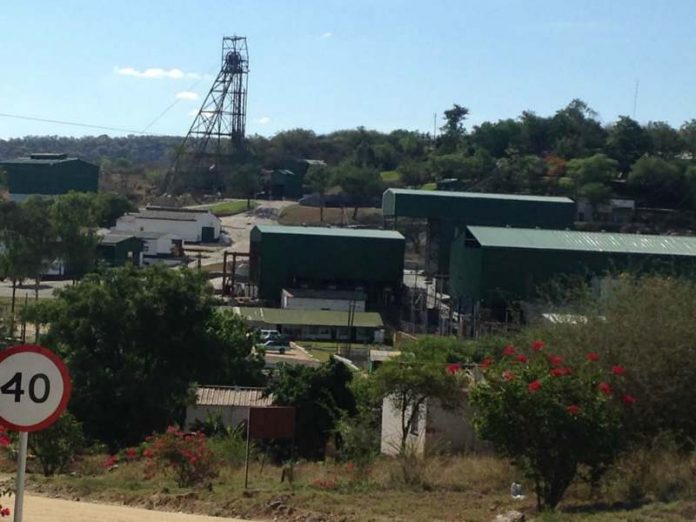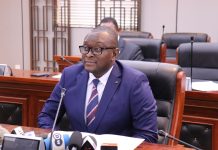MINING AFRICA REVIEW – A recently released Preliminary Economic Assessment (PEA) has confirmed that Caledonia Mining’s Bilboes project has the capacity to produce 150 koz a year of gold, a production level which would not be unusual in some parts of Africa but is huge by Zimbabwean standards.
ARTHUR TASSELL recently discussed the highlights of the PEA with senior executives of the company, who disclosed that – under a best-case scenario – Bilboes could pour its first gold in 2028.
Listed on London’s AIM and the NYSE, Caledonia is already a prominent player in Zimbabwe’s gold mining industry with its Blanket mine near Gwanda – with a gold production of just over 75 koz in 2023 – ranking as Zimbabwe’s biggest current gold mine (just ahead of Kuvimba’s Freda Rebecca mine).
Blanket, which originally started up over a century ago and has had many owners over the decades, has been a huge success for Caledonia. The company has virtually quadrupled production at the mine over the past 15 years ago and in 2021 commissioned its ambitious Central Shaft project which extends the mine life well into the 2030s.
Under the leadership of CEO Mark Learmonth, Caledonia has long held an ambition to diversify beyond Blanket and become a multiasset producer. With this goal in mind, it acquired the Maligreen gold project, near Gweru, in 2021, and the Motapa and Bilboes gold projects, located approximately 75 km north of Bulawayo, in 2022/23. Bilboes is the most advanced of the projects and will be developed first by Caledonia.
“The PEA we’ve completed confirms the results of a Feasibility Study (FS) carried out by the previous owners of Bilboes, which detailed a very robust open-pit project,” says Learmonth.
“According to our PEA, Bilboes will produce 1.52 Moz of gold over a 10- year mine life at an average Life of Mine (LoM) AISC of US$968/oz. The PEA estimates the NPV – using a 10% discount rate and a three-year trailing average gold price of US$1 884/oz – at US$309 million and the ungeared IRR at 34%. The total capital cost is US$403 million with a peak funding requirement of US$309 million. Payback is achieved in 1.9 years.”
Addressing the question of why Caledonia has elected to replace the FS completed in 2021 with a PEA, Learmonth says the PEA is, in most respects, at an FS level. “We have, however, changed the development plan for the Tailings Storage Facility (TSF),” he says.
“It will now be constructed on a modular basis to reduce the initial capex and improve the economic returns of the project. The work carried out to date in respect of the revised approach to the TSF – though well advanced – is not yet at a feasibility study level with the result that the overall study is classified as being at a PEA level.”
He adds that both the original FS and the PEA have been prepared by DRA Global, which has indicated that the work required to bring the PEA to a feasibility level will be completed in the first half of 2025.
Learmonth says that when Caledonia first acquired Bilboes it looked at developing the project in phases in order to reduce the initial capex and reduce the need for third party funding. “It is now clear, however, that a singlephase development strategy provides better returns and a more attractive financing structure than phased development alternatives and this is the strategy we’re pursuing going forward,” he states.
While Caledonia’s plans for Bilboes represent – to all intents and purposes a greenfield development, there has been past mining at the four properties making up the project. These are Isabella North, Isabella South and McCays, which are all close to each other, and Bubi, 32 km to the north-east. The properties are located in the Bubi greenstone belt in a mining district which also hosts the Turk mine.
The total land package comprises mining claims covering approximately 6 700 ha and exploration tenements totalling approximately 59 000 ha. The original owner and operator of Bilboes was Anglo American Zimbabwe (Amzim) which started mining in 1989, initially at Isabella. Since then, the Bilboes operations have produced 294 koz of gold from the open-pit mining and heap leach processing of oxide ores.
Currently, there is only a very small gold production from the properties. As Learmonth says, “We are continuing to irrigate the heaps but this is just to keep operations ticking. Gold production is no more than 4 or 5 kg a month.”
A key figure in Bilboes over the years has been Victor Gapare, who is an Executive Director of Caledonia. A past-president of the Chamber of Mines of Zimbabwe, he has been intimately involved with Bilboes throughout his career.
He was Operations Director for the gold and pyrites business of Amzim during the time Amzim operated Bilboes and was subsequently CEO of Bilboes Holdings after management acquired the company from Amzim in 2003.
Bilboes Holdings was established in the 1980s by Amzim as its operating vehicle for the Bilboes project. Its parent, Bilboes Gold, was acquired by Caledonia in January 2023. “At the time of the management buyout, the oxides were heavily depleted but we knew there was considerable sulphide ore potential,” says Gapare.
“Amzim had carried out a fairly limited drill programme in the 1990s and this eventually resulted in an inferred sulphide resource of just under 0.5 Moz being declared in 2009. Our goal was to expand this. Our efforts were severely impacted by the hyper-inflation that affected Zimbabwe subsequent to 2003 but in 2011 we managed to secure a major US$6 million investment in Bilboes Holdings which allowed us to start on an intensive exploration programme.”
Ultimately, the drilling campaigns undertaken by Bilboes – comprising both RC and diamond drilling – totalled over 93 000 m and resulted in the company being able to declare a very sizeable resource in 2021 comprising 2.47 Moz at 2.30 g/t in the measured and indicated categories and 0.56 Moz at 1.99 g/t in the inferred category. This resource underpinned the original 2021 FS on Bilboes and also Caledonia’s PEA.
Mining process
The overall grade of the resource means that Bilboes will be a grade leader amongst large open-pit gold development projects in Africa, surpassing other projects such as Nyanzaga in Tanzania, Abujar in Côte d’Ivoire and Twin Hills in Namibia.
The Bilboes ore is refractory and its treatment will require the use of BIOX technology in combination with flotation and CIL processing. The BIOX process involves the destruction of the sulphides in the concentrate using oxidising bacteria to expose the gold particles for downstream recovery. Originally pioneered at the Fairview mine of Barberton Mines in South Africa, the process is well proven globally and is already in use in Zimbabwe at RioZim’s Cam & Motor mine near Kadoma, which commissioned a BIOX plant in 2022.
Bilboes has in-depth experience with the BIOX process, as Simba Chimedza, Caledonia’s Group Technical Manager (who was previously with Bilboes Holdings), explains.
“We operated a pilot BIOX plant on site in 2018 as part of the feasibility study workstream. The plant ran for a period of 235 days and achieved an 88.8% gold dissolution of the concentrate derived from the Isabella and McCays ore with the equivalent figure for Bubi being 95.7%. The plant was operated in conjunction with Metso Outotec, which owns the BIOX technology.”
The proposed processing plant will be located roughly midway between the Isabella and McCays deposits, which will be the first deposits to be mined. It will be designed to process 2.88 Mtpa in years 1 to 6 and 2.16 Mtpa from years 6 to 10. A new haul road will be built to allow Bubi ore to be trucked to the facility.
Elaborating, Chimedza says production during the first six years will be based on the processing of 240 kt per month of milled plant feed from the Isabella and McCays deposits “The focus of operations will then move to the Bubi mining area, which will provide the ore for the plant over the remainder of the mine life. The plant throughput will reduce to approximately 180 kt per month due to the harder nature of the Bubi plant feed,” he says.
On the subject of the proposed mining operation, Chimedza says it will be entirely conventional. “We already have pits at all the mining areas as a result of the oxide mining, so it’s really a matter of widening and deepening these pits. The deepest current pit is Isabella North, which goes down to 35 to 40 m, and we will probably take it down to about 250 m. In all, we’ll be moving about around 30 Mt a year of ore and waste so the minimum size for the haul fleet would be 60-ton ADTs although 100-ton rigids are also a possibility.”
Opportunities for local contractors
Caledonia will outsource the mining and is confident that a Zimbabwean contractor will be capable of handling the volumes required. Comments Learmonth: “Zimbabwe has some excellent contractors who can offer an open-pit mining capability. We’re currently constructing a new tailings facility at Blanket – which involves considerable earthmoving – and have been impressed by the performance of the local contractor we’re using. We will go out on open tender and it’s not impossible that we could appoint a contractor from outside Zimbabwe but definitely preference will be given to local players.”
Subscribe to our newsletter
The new TSF required will account for a significant portion of the proposed capex. It is being designed by SLR Consulting (South Africa) and will have a capacity of 22.9 Mt for the flotation tailings (240 kt per month deposition rate) and 1.7 Mt for the BIOX compartment (12 kt per month deposition rate). The TSF construction is currently planned in three phases aligned to the production schedule.
Learmonth makes the point that while Bilboes is a project of impressive scale for Zimbabwe, it could be bigger still. “The neighbouring Motapa property, with a mining lease covering approximately 2 000 ha, was also an Amzim project. It has a long history of small-scale mining. It is still early days but we are starting to ramp up our exploration of the property and believe that it has the potential to add ore feed to Bilboes in the future or possibly even support a standalone operation.”
Discussing the timeline to an investment decision on Bilboes, Learmonth says Caledonia will now focus on elevating the PEA to FS level and also continue exploring the funding options for the project.
“The project has a high capacity for debt and our present thinking is that debt will account for roughly two-thirds of the US$309 million of peak funding that we need. We believe the most likely lenders will be Africa-focused Development Financial Institutions (DFIs) as we think it unlikely that western banks will have an appetite for a project of this nature. We are being advised by Cutfield Freeman, who are mining debt advisors based in London, and we intend testing the market in the final quarter of this year,” he states.
“Assuming we can line up the funding, we could make a start on mine construction in Q4 of 2025. The build time is about two years, so this could see us in production by 2028. We’re not, however, under any pressure to get into production as fast as possible as we’re not bleeding cash. Blanket is an excellent cash generator – everyday we’re accumulating cash.”
As a final comment, Gapare says Bilboes can be seen as part of a resurgence of gold mining in Zimbabwe. “The gold sector in the country is currently very active with many projects underway and total annual gold production coming in at around 33 tons,” he says.
“Most experts believe, however, that this level of production could be virtually doubled. If we do reach this target, then almost certainly Bilboes will be one of the major contributors. In our view, it is by far the most exciting gold project currently under development in Zimbabwe and indeed one of the most significant gold projects the country has ever seen.” The Isabella site showing leach ponds and (in the left background) workshops

















